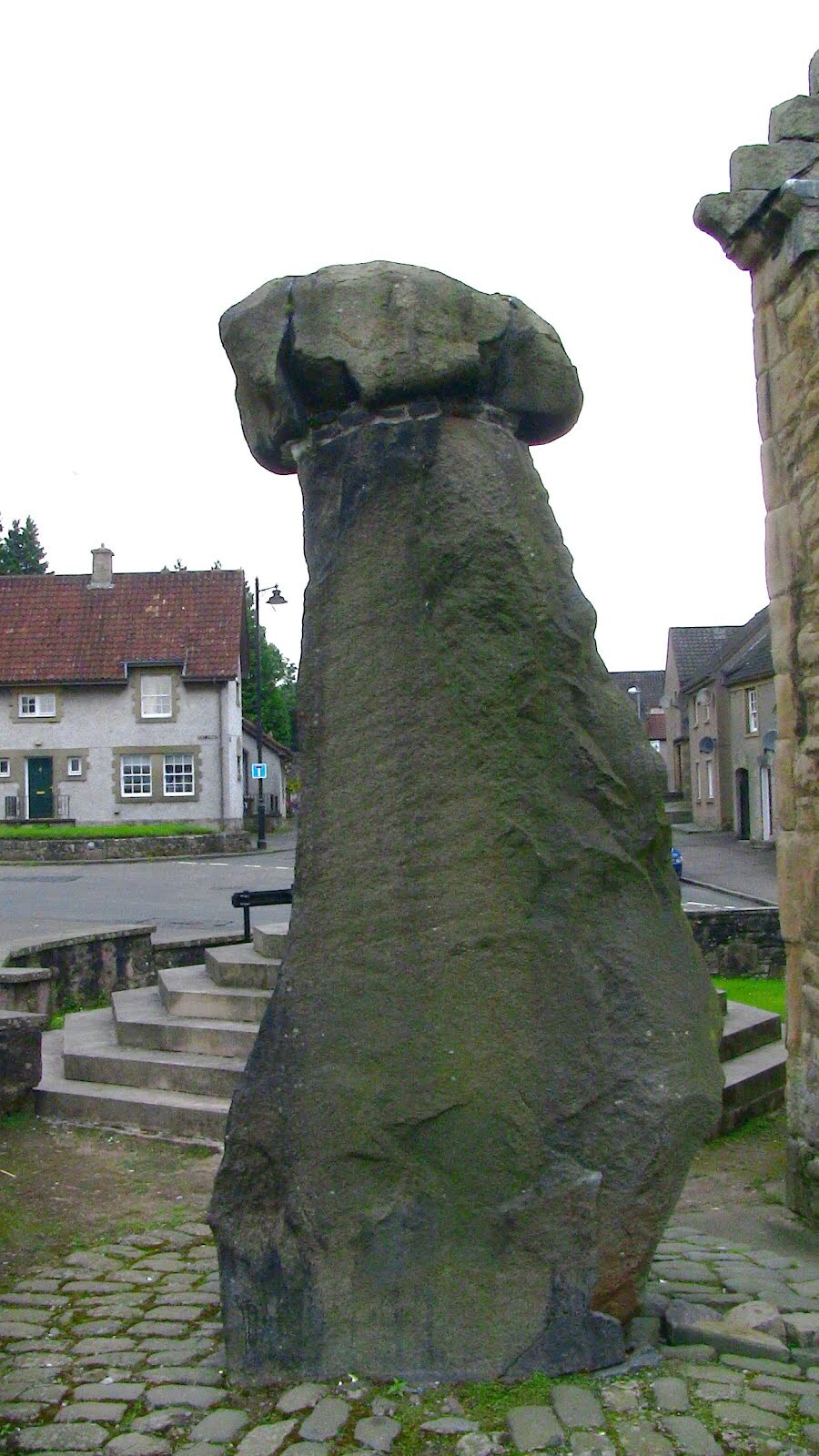Celtic Market Crosses
Posted by Groomporter on Feb 12th 2018
Originally published July 2007.
Celtic Market Crosses
Victorian writers often assumed that stone market crosses in many villages in the British Isles were replacements for the original wooden crosses erected by saints and priests in the early days of Christianity. But in the early 20th century a man named John Irwin pointed out that as early amateur archaeologists began exploring the remoter parts of Britain they found sculpted stones with more obviously pre-Christian markings and clearly phallic shapes. Some of the local people even maintained customs that were associated with these stones.

Unfortunately, some of these Victorians, coming on objects which they found too embarrassing for a 19th century audience, seem to have quietly broke, or buried some of these objects. The phallic-shaped Clackmannan Stone, located east of Stirling, is one of the few to have survived, and stands a short distance from a later market "cross." Another stone, the Langholm Mercat (market cross) was unearthed by road construction crew, and is again, a shaft with a knob on the top. It was found to have a cross inscribed in it's top which is believed to be a later addition.
These more phallic stones are suggested to have been the early inspiration for many later market crosses in the form of a tall shaft with a ball or knob at the top. Although they are not actually cross-shaped, these have come to be called market crosses as a generic term since many had crosses as additional decorations on the top, and since they have been used for similar community purposes as actual cross-shaped monuments in villages and towns. The symbolism behind these monuments is often said to be that of the world axis — the link between heaven and earth. The ball or sphere at the top may represent heaven, the spiritual state, or even the sun. The shaft is the world-axis or bridge between heaven and earth and the common square base represents the earth.
